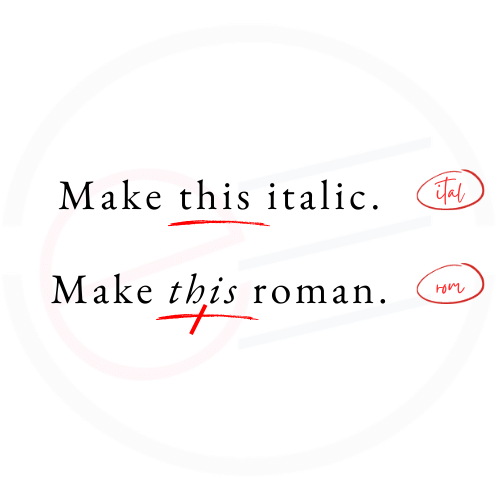Italic type is a style of font where the letters are slanted to the right. It is commonly used in typesetting for various purposes. Here are some general conventions regarding the use of italics.
Emphasis: Italics are often used to emphasize or highlight a particular word or phrase within a sentence. For example: He really emphasized the importance of maintaining the status quo rather than choosing any other options.
Titles of works: Italics are used for titles of books, movies, plays, music albums, artworks, and other standalone works. For example: To Kill a Mockingbird by Harper Lee.
Foreign words and phrases: Italics can be used for foreign words or phrases that are not commonly used in the language of the text. For instance: She had a certain je ne sais quoi that captivated everyone around her.
Scientific names: Italics are used for the scientific names of species in biology (binomial nomenclature). For example: Homo sapiens. While genus names and species names are set in italics, other nomenclature such as family names is set in roman.
Technical terms: In technical writing, especially in fields like mathematics, physics, and computer science, italics may be used to denote variables, formulas, or special terms. For example: Let x be the variable representing the input.
Book and film titles in text: When referring to the title of a book, movie, or other work in the body of a text, it is usually italicized. For example: In the novel Pride and Prejudice, . . .
Ships and aircraft names: The names of ships and aircraft are often italicized. For example: HMS Titanic.
Alternative script or font: Italics can be used to represent text in an alternative script, font, or handwriting style within a predominantly roman typeface. For example: The word “hello” in italics may look like hello.
Introducing new terms: When introducing a new term or defining a word, italics can be used to set it apart from the rest of the text. For example: A paradigm shift is a fundamental change in approach or underlying assumptions.
Thoughts and inner dialogue: In literature, italics may be used to indicate a character’s inner thoughts or inner dialogue.
Titles of art exhibitions: The titles of art exhibitions are usually italicized. For example: Impressionism and the Art of Life.
It’s important to note that specific style guides (like APA, MLA, Chicago, etc.) may have their own guidelines for using italics, so if you’re writing for a particular publication or organization, it’s a good idea to consult their style guide for precise rules.

And a trivia: During the era of hardcopy editing (that is, editing on paper using a pen), a word or phrase is underlined to indicate that this part needs to be set in italics. Additionally, the copyeditor may include a marginal mark, by writing “ital” and encircle it. To remove italics, the line is crossed out and a marginal marking is made by writing “roman” and encircling it.




0 Comments